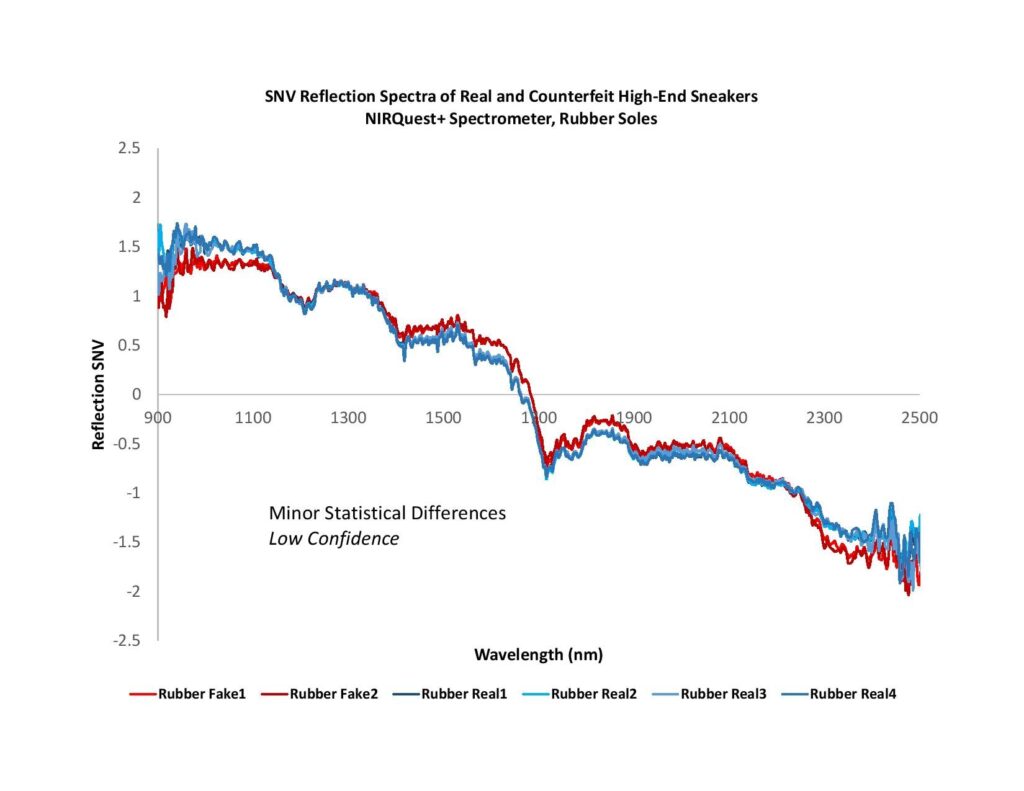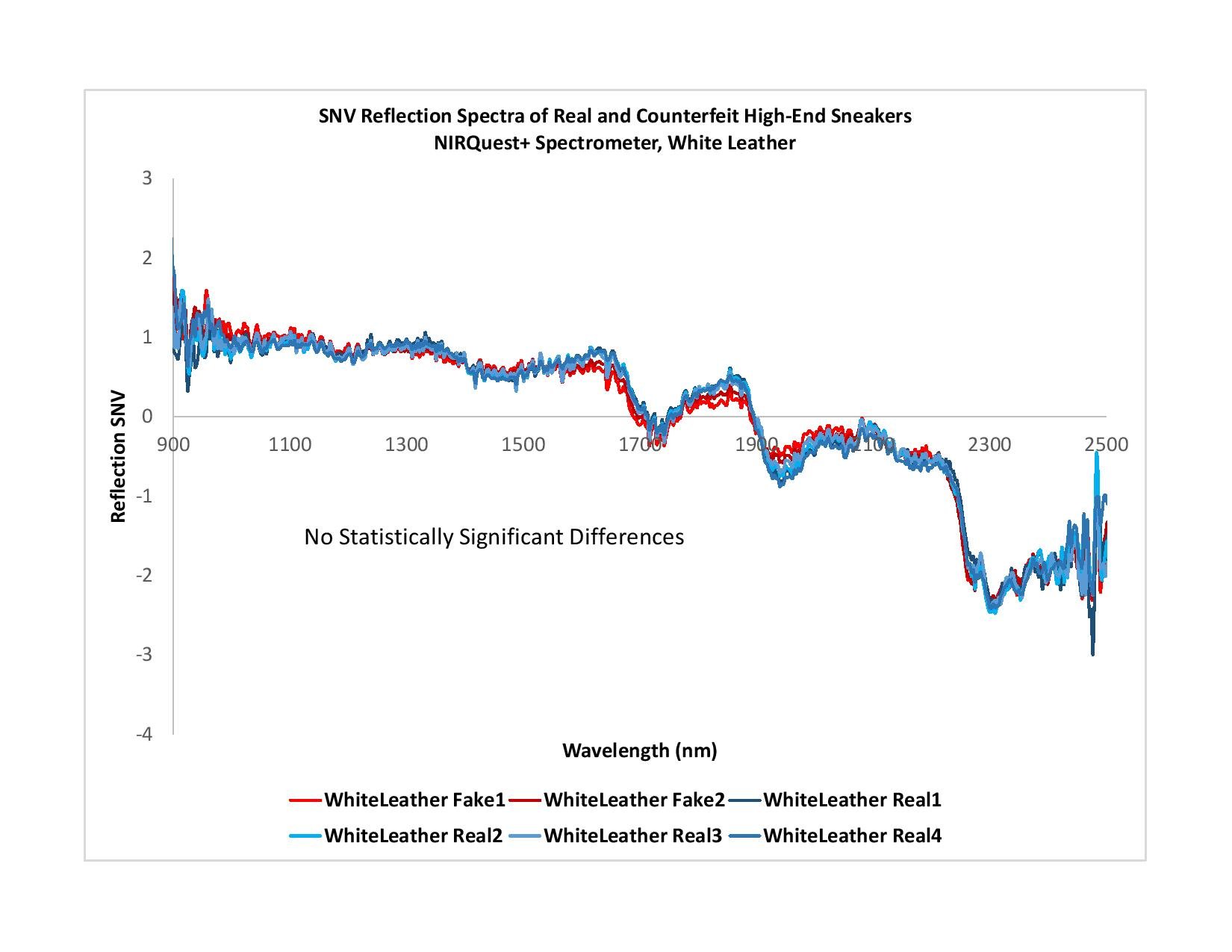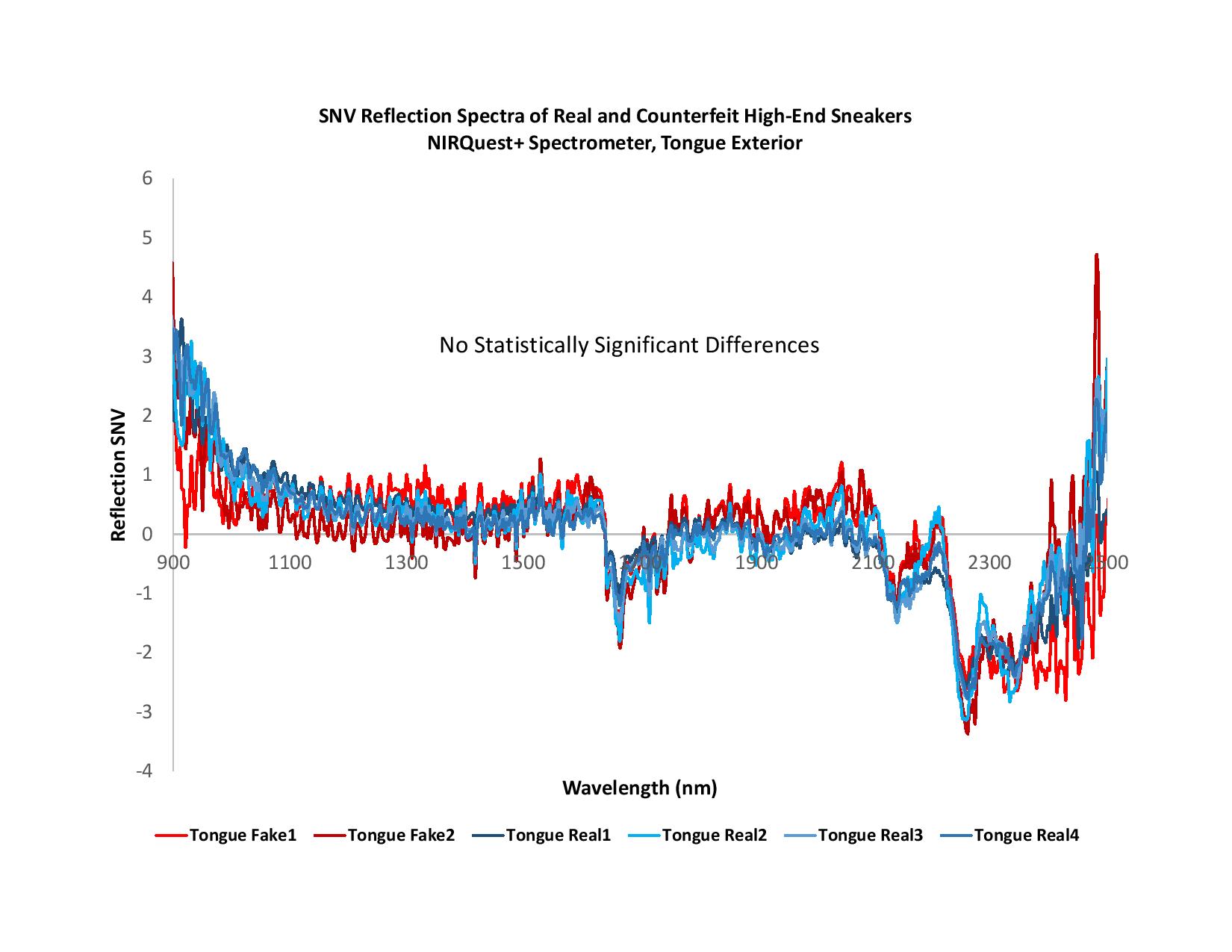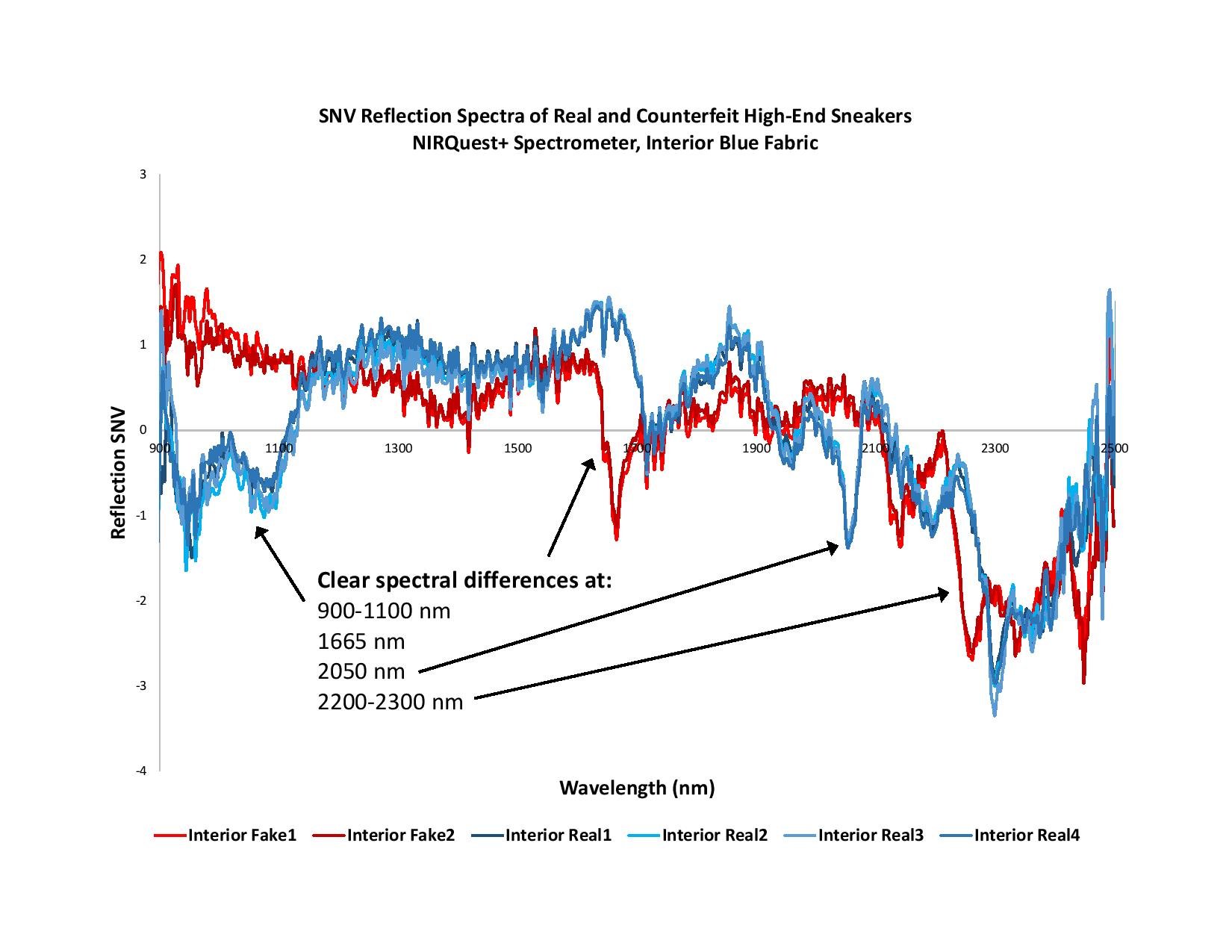Counterfeit goods cost businesses and consumers billions of dollars annually, with knock-offs increasingly difficult to identify. Spectroscopy can authenticate products by identifying embedded markers and substandard materials.
Counterfeiters will often use many of the same materials as major consumer goods manufacturers, and in at least some cases, utilize workers familiar with the same assembly and construction techniques that major manufacturers rely on.
This makes it challenging to spot the fakes, especially upon visual inspection alone. To help differentiate the branded products from reproductions, manufacturers are using optical authentication techniques such as NIR reflection spectroscopy. In one recent example, we used an NIR spectrometer and simple spectral data processing techniques to help a product authentication company detect inferior-grade materials in a well-known brand of $100-plus per pair sneakers.
Experimental Setup
We configured a system designed to easily and quickly scan some part of the shoe and provide a statistically significant indication of whether the sample is real or counterfeit. Here’s what we used:
A 400 µm reflection probe (QR400-7-VIS-NIR) was connected to a NIRQuest+2.5 spectrometer (900-2500 nm) and high-power tungsten halogen light source (HL-2000-HP). OceanView software was configured in reflection mode using a WS-1 white reflection standard to establish 100% reflection across the spectrum.
Various areas of each of six shoe samples (a combination of authentic and counterfeit sneakers) were observed with the reflection probe and the resulting spectra were saved for analysis. We measured the rubber soles, leather exterior, tongue exterior, interior fabric and even the laces, even though they are independent of the shoe assembly (unsurprisingly, the laces had nearly identical spectral features).
Results
Although there was clear differentiation among sneaker samples, the most dramatic difference among samples was largely limited to just one part of the sneaker. Here’s what we measured:
Rubber Soles
Although we detected some differences in spectral features among samples, there isn’t enough variation to yield high confidence in identifying counterfeits (Figure 1). Indeed, the material seems to have near-identical spectral profiles, with slight offsets most likely due to changes in surface quality or similar optical effects.

White Leather
The leather used seems to be identical between real and counterfeit samples (Figure 2). This underscores the difficulty in using visual inspection alone to authenticate the product.

Tongue Exterior
The tongue material used also seems to be identical between real and counterfeit samples (Figure 3).

Interior Fabric
For at least these samples of high-end sneakers, the interior fabric (blue, in this case) is the key to differentiating the authentic from counterfeit shoes. There are multiple regions of clear spectral differences that could easily be used to trigger a decision output (Figure 4). Our method of optical scanning for the interior fabric requires <1 second acquisition time.

Conclusion
This initial study confirmed the use of NIR reflection spectroscopy to differentiate the real and counterfeit shoe samples with a high level of confidence and by using multiple active spectral bands. This could be further investigated with lower-cost NIR platforms to create comparative performance profiles, and likewise could expand to other shoe (or product) samples to further confirm NIR reflection as an acceptable technique.
Counterfeiting affects everyone, whether it’s the dire health consequences of adulterated baby formula or the frightening prospects of forged currency propelling organized crime and terrorist cabals. Fake footwear may not be nearly as consequential, but it still devalues brands and increases prices for consumers. Anti-counterfeiting technologies like spectroscopy can help to protect legitimate businesses and unsuspecting consumers from fraud.
